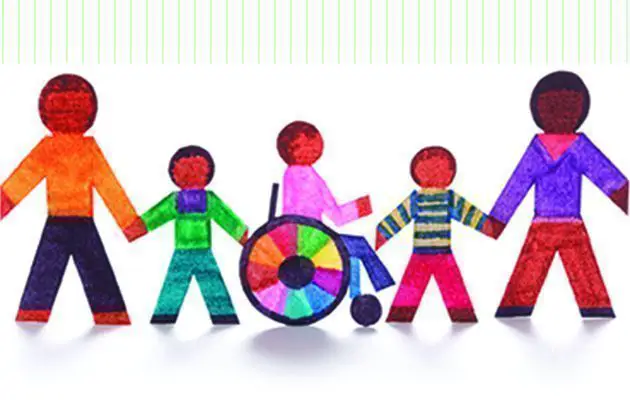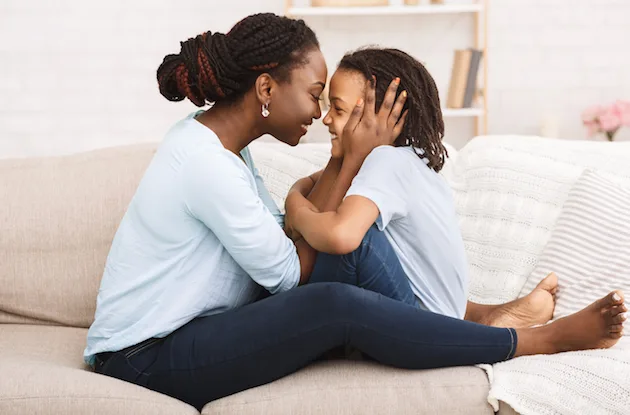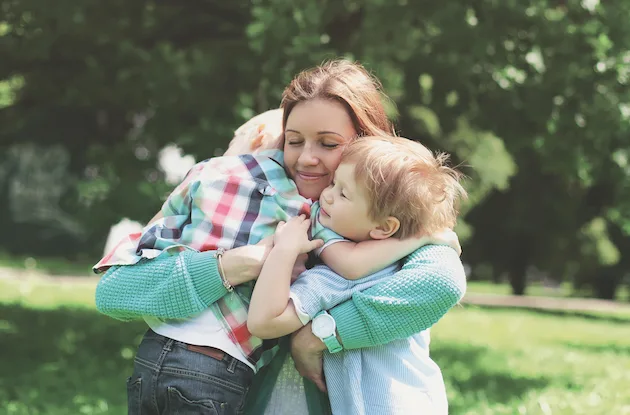Transitioning her third-grade son to a fully inclusive educational environment means forging new connections for this NYC mom. Together they adapt to their new normal.
I’ve written about my 8-year-old son’s special needs before, specifically about the silver lining of him getting booted from nursery school when he was 3 years old. He was “the hitter,” but he was also the hugger, so understanding that he had sensory issues put me on a steep learning curve. What followed was a full indoctrination into the special needs world.
 Now, as Jamie mainstreams fully into his school after a steady progression into a “typical” classroom landscape, I find myself on the other side of that passage. For kindergarten and first grade, he was in a contained special needs program with a ratio of three teachers to eight children. In the first grade, he was able to join the first grade for math every day with an aide, otherwise known as partial-inclusion. This year he was a full-inclusion student in the only inclusion-model special education program in the city. This means he was in a very structured second grade class in a Catholic school with his own teacher, and a battery of special services on the side: occupational therapy, speech, and most importantly for my boy, counseling with a focus on social skills. Next year comes third grade, heading toward us like a fast-moving train. There will be no special teacher for just Jamie; he just doesn’t need one anymore. He’ll still get related services (OT, speech, counseling), but presumably they too will wane off, if only so he won’t be out of the classroom so much.
Now, as Jamie mainstreams fully into his school after a steady progression into a “typical” classroom landscape, I find myself on the other side of that passage. For kindergarten and first grade, he was in a contained special needs program with a ratio of three teachers to eight children. In the first grade, he was able to join the first grade for math every day with an aide, otherwise known as partial-inclusion. This year he was a full-inclusion student in the only inclusion-model special education program in the city. This means he was in a very structured second grade class in a Catholic school with his own teacher, and a battery of special services on the side: occupational therapy, speech, and most importantly for my boy, counseling with a focus on social skills. Next year comes third grade, heading toward us like a fast-moving train. There will be no special teacher for just Jamie; he just doesn’t need one anymore. He’ll still get related services (OT, speech, counseling), but presumably they too will wane off, if only so he won’t be out of the classroom so much.
Along the way, parents who we’ve encountered in typical educational settings have always wanted to know his diagnosis. “He has a constellation of special needs,” I’d say—a phrase I adopted after many coaching sessions with social workers before meetings with the New York City Board of Ed. There is no official diagnosis: a “low arousal rate,” which means he literally needed more input to feel things; a motor tic, which would emerge randomly as a twitch or arm jolting out from time to time. Oh, and he liked to touch hair a lot.
This month, he’s graduating from his special education inclusion program, mainstreaming fully into the Catholic school, where he’s physically been going to school since kindergarten.
I’m trying to adapt to having a “mainstream” kid. This is coinciding with a not-so-coincidental plea for more independence from him, less coddling. I find I’ve been repeating the same joke again and again: “Eight is the new 14.” I give him all the space he wants on the playground now and sit on the bench with the other moms. He kisses me right before the bus pulls up, before anyone can see him do it. When there are social tanglings on the playground, I don’t need to step in so much anymore. He’s grown to be very good at navigating the volcanic waters of a game of handball with a group of boys, something a lot of parents haven’t had to be concerned about.
What is it like to be the mom of a “mainstream” kid? To not need to write big checks to lawyers; to not have quarterly hour-long meetings picking apart his progress and readjusting educational goals; to not have grueling meetings haggling over services with the Board of Ed.
Like Jamie, my steps into the mainstream world have also been baby steps… When he was booted so long ago, I was too. Afterward came a time when my immediate parent circle became nearly 100-percent special needs moms. I joined a weekly support group where we spoke the same language. Words we used that other moms didn’t have on regular verbal recall were “sensory,” “perseverates,” “stimming,” as well as a parade of acronyms: IEP, DOE, PT, OT. Our cheerleaders were neurologists and educational psychologists who could steer reports to kids getting into the proper programs and schools. There were social workers and consultants; a lot of people evaluating my child after they’d met him for like one hour.
Meeting other special needs parents by happenstance on a playground felt to me as if I’d run into an old friend in a foreign country. I didn’t have to worry about my son becoming overexcited and heading straight toward a lovely head of hair, because they wouldn’t get weird on me if he did. I didn’t have to worry about him making “beeping” noises when he got excited and felt socially overwhelmed. I didn’t have to answer the same questions over and over again: “Is he autistic?” No, he’s not, but what if he was? So what? Or, “What’s wrong with him?”, a real doozy and teaching moment which I grew to ignore after initially getting ticked off. Was it my responsibility to educate people on the insensitivities of their language? Or finally, the sentence that I know was supposed to make me feel better, even if I wasn’t feeling bad in the first place: “It doesn’t seem like anything is wrong with him.” To that… “Thanks, there’s not…” In my support group, I learned how to cope with the anger I felt toward family and close friends who would say that he was normal. “Thanks, he’s been working so hard.”
When I had first gotten Jamie into his therapeutic nursery I was anxious to speak to any other mom who’d been through it. One, who had a teenaged son with special needs, told me she’d recently gone through a closet and thrown away a giant box of paperwork related to his journey: the legal papers, the IEPs, the reports, the medical paperwork. “I looked at him and realized he’s just who he is, and I don’t need to define him in this way anymore.” I have my own box of paperwork that I’d love to chuck out the window. I’m not quite ready, but it has to do with my relationship to his special needs, not his own.
I’m not sure if I’ll ever forge the same kind of friendships with the new mainstream parents I’m meeting. The conversations on the playground now revolve around things besides our kids’ struggles and therapies. It’s all normal stuff like homework and soccer and which karate class does your kid take? I like to imagine that my old friends are just across a small stream. I can wave, and I can jump across if I need to, but the new terrain is calling me and it’s quite beautiful.
For an update on how the author’s son fared one year after being mainstreamed—including the new set of challenges she faced as a parent—read part-two in this series.





















